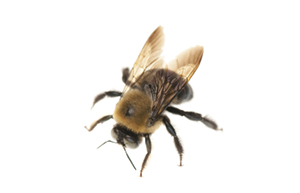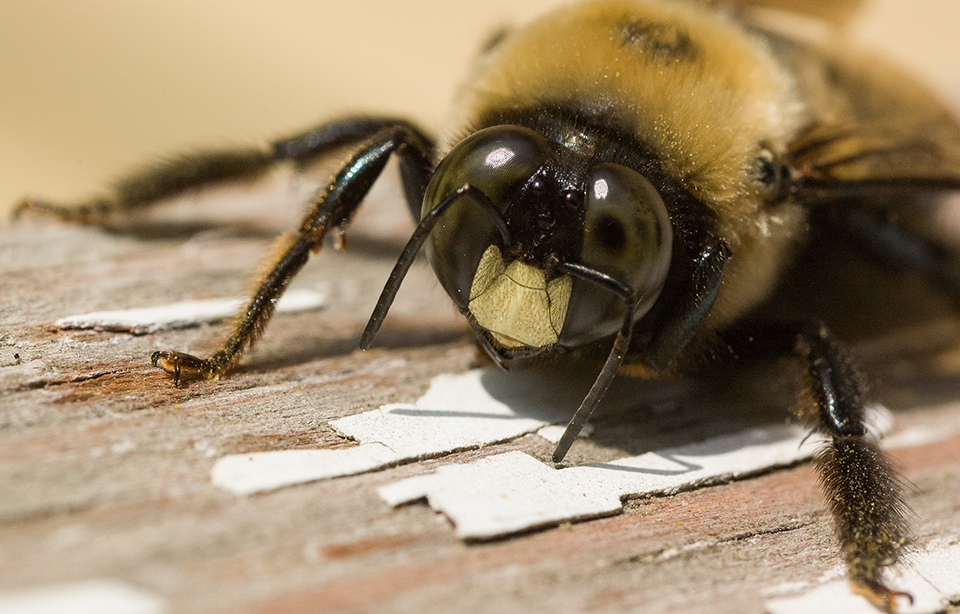
Carpenter Bee Control Methods
Carpenter Bees Overview

The carpenter bee is a large species, often mistaken for a bumble bee. Unlike bumble bees, which have hairy abdomens, carpenter bees have shiny abdomens.
Carpenter bees are suitably named, due to the fact that they tunnel into wood to build their nests. Each nest will have a single entrance, but the bees will create many tunnels that run off from each other. While termites actually eat wood, carpenter bees do not consume it; when tunneling, they may discard the bits of wood or re-use them to build sections within their nests. If you notice perfectly circular, half-inch holes in the unfinished wood around your property, you may be in need of Braman’s carpenter bee control methods.
Carpenter bees are long-lived, up to three years and there can be one or two generations per year.
Where are They Found?

A carpenter bee builds its nest in fence posts, eaves or structural timbers. They prefer unfinished softwoods, such as cypress, cedar and pine, but especially redwood. Unlike bumble bees, these bees are solitary and do not live in large social nests. A female will chew through wood to create individual galleries where she can lay eggs and protect her larvae. The following spring, the bees may reuse these existing galleries or may choose to bore new ones.
What Makes Carpenter Bees Harmful?

Female carpenter bees have the potential to sting, but they are generally non-aggressive and prefer to fly away rather than fight. The pale-faced males will intimidate you by nosily buzzing around your face, but they are incapable of stinging.
Damage to structural wood is rare, but you may find the holes the carpenter bee makes around your home, as well as the yellow fecal stains they leave, unattractive. Additionally, woodpeckers will try to “remove” the bee larvae from the wood and cause even more damage than the bees.
Signs Carpenter Bees are Present Around Your Home or Facility

Carpenter bees create big round holes, approximately half an inch in diameter, in the surface of the wood. Because of their size, they are difficult to miss. Larger woodpecker damage may also indicate carpenter bee issues.
Treatment

Every carpenter bee hole is treated to eliminate the adult bees and their developing young. We suggest painting, varnishing, or finishing the wood to prevent reinfestation the following year. Unfinished wood remains attractive year after year.
If you think you have an infestation, contact Braman for assistance with carpenter bee removal.

Tell us about your pest problem. We can provide a free estimate over the phone.
Call Braman 24/7 at 800-338-6757

